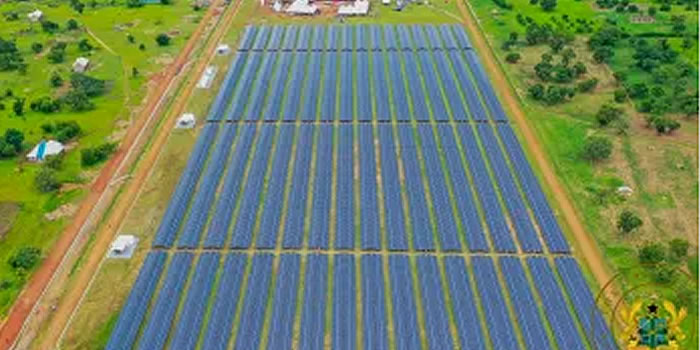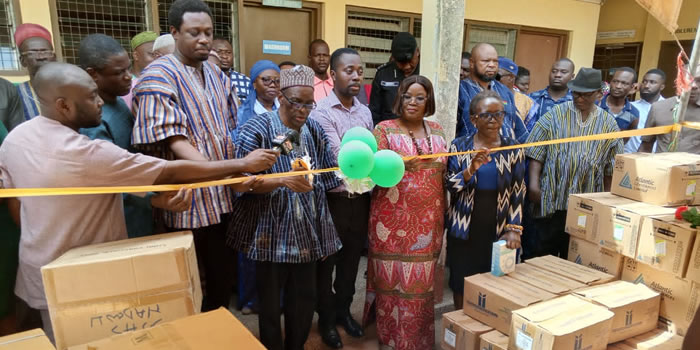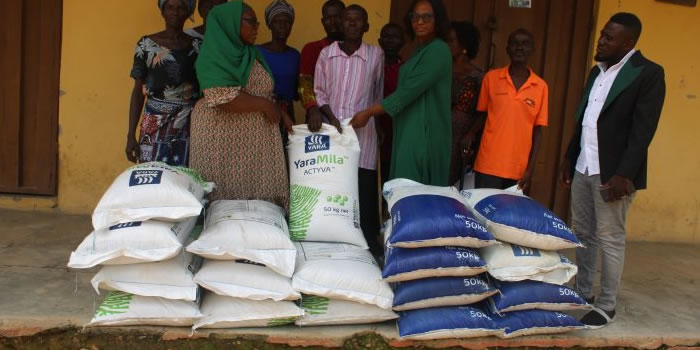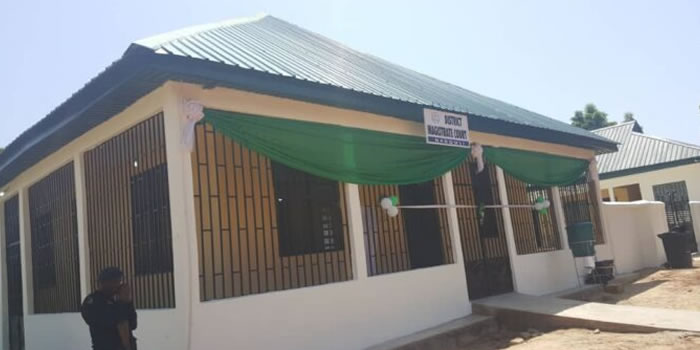

The industrial sector is the least developed in the district. Industrial activities are small scale and characterized by easy entry, reliance on indigenous resources, family ownership and the use of labour intensive technology.
The small-scale industrial activities undertaken by the labour force include basketry, cloth/smock weaving, blacksmithing, pito brewing, pottery and shea butter extraction. With training and credit interventions from the District Assembly, National Board for Small Scale Industries and NGOs, small scale industrial activities have stepped up in the district.
Nevertheless, inadequate skills in managing finances, inadequacy of available credit facilities, low level of technology and inadequate socio-economic infrastructure stand as teething issues militating against the development of this sector of the district’s economy.
Commerce
The sector is dominated by informal small scale trading, especially in agricultural produce and limited modern consumer products. It is characterized by family ownership. The district has three (3) major periodic markets. These markets centers are located in Sankana,Tangasia and Bussie.
However, these markets are not so brisk, as revealed by the volume of endogenous and exogenous inflows of goods to and from the markets. Nadowli, the district capital is the main commercial center in the district and most of the settlements in the district depend on it frothier shopping needs.
The trading activities in the district particularly in the periodic market centers form one of the major sources of revenue to the District Assembly. Thus the improvement of market infrastructure has the potential of boosting the district’s revenue generation capacity.
Commerce/Service
The commerce/service sector is the second largest employer of the district’s labor force after agriculture. It encapsulates a wide range of tertiary activities. These include retailing and petty trading, transport and financial services and services provided by civil servants. The sector is dominated by informal small scale trading, especially in agricultural produce and limited modern consumer products. It is characterized by family ownership.
The district has three (3) major periodic markets. These markets centers are located in Sankana, Tangasia and Bussie. However, these markets are not so brisk, as revealed by the volume of endogenous and exogenous inflows of goods to and from the markets. Nadowli, the district capital is the main commercial center in the district and most of the settlements in the district depend on it for their shopping needs.
The trading activities in the district particularly in the periodic market centers form one of the major sources of revenue to the District Assembly. Thus the improvement of market infrastructure has the potential of boosting the district’s revenue generation capacity.
The transport sub-sector plays a crucial role in the district’s economy with regard to getting the produce to the market as well as supplying inputs and other needs of the people in deprived areas. Nevertheless, the sub-sector is poorly developed. There is only one financial institution in the district. This is the Sonzelle Rural Bank Agency in Nadowli and its branch in Kaleo. The main focus of rural banks is to:
- Provide loans for agricultural activities
- Provide loans for commerce and small scale industries
- Provide security for client savings
However, this financial institution has failed to provide the needed support for the various economic sectors in the district particularly agriculture. As could be seen from the agricultural and industrial sub sectors, the people still depend on their savings to finance their businesses and farming. This limits their ability to expand.
Another important area of the services sector is the formal sector comprising civil and public servants. These are mainly in the government, NGOs and other line agencies but logistics, inadequate office and residential accommodation is greatly affecting their performance. There is the need to establish linkages between this sector and other sectors of the economy to facilitate growth.
This sector is characterized by small-scale activities and the use of labour intensive production technology. These include basketry, cloth/smock weaving, blacksmithing, pito brewing, pottery and shea butter extraction.
With training and credit interventions from the District Assembly, National Board for Small Scale Industries and some NGOs, small scale industrial activities have stepped up in the district. Nevertheless, inadequate financial management skills, inadequacy of available credit facilities, low level of technology and inadequate socio-economic infrastructure stand as teething issues militating against the development of this sector of the district’s economy.
Type and Size of Industry
All industries in the district are small scale and can be categorized into agro-based, wood-based, textile-based, metal based, clay and sand based and leather based industries. This classification was based on the type of raw materials used in production (See Table 12) From the table it can be seen that majority of the small-scale industries are agro-based (75.5%), wood based (11.5%), textile based (7.4%) with clay and sand and metal based industries accounting for the other proportions.
The high proportion of agro-based industries in the district indicates the strong relationship between industry and agriculture, which can be further, developed to enhance incomes. The dependence on the depleting savannah woods of the district for charcoal burning and carving can have dire consequences on the environment if measures are not put in place to regulate it.
Types of Ownership
Most of the small-scale industries in the district are one-man business. This attitude of business ownership has limited their ability to secure the needed funds to expand their businesses as most of them are operating below capacity. The table below depicts the types of business ownership in the district
It can be observed from the table 13 that as high as 93% of businesses are solely owned by individuals with only 7% being owned by relatives and cooperatives. To enhance growth and expansion of the small scale businesses the proprietors need to be encouraged to form groups and associations through which funds can be channeled to benefit prospective small scale business enterprises.
Source of Finance
The small-scale operators in the district mobilize their initial working capital from their own saving. Other sources include relatives, friends, and moneylenders. These sources give them only small capital to start with, which limits their ability to expand their businesses. Table 12 shows the sources of finance and the proportion of industrialists who depend on them.
From the table it could be seen that financial institutions play a limited role in supporting small-scale industries in the district. The inability of the industrialists to secure loans from such financial institutions is because they are not able to provide the necessary collateral security to guarantee for loans. The need to form joint venture for assistance is therefore imperative if financial assistance which has since been a major constraint to small scale businesses can be overcome.
Marketing
About 85% of the products from the small scale industries in the district are sold within the settlements of production usually at the working site. Out of the remaining 15%, 10% are sold outside the settlements but within the district and the remaining 5% are sold outside the district.
Problems of the Small Scale Industrial Sector
It could be inferred from the forgone analysis that the small-scale industries in the district are:
Producing to meet local needs
Creating jobs;
Mobilizing small savings in the non-banking sector and channeling them into productive activities.
Making use of local resources thereby contributing to the resource development of the district
Expanding the range of goods produced in the district and diversifying the goods on the market.
Improving incomes and therefore the living standards of the people.
In spite of these important roles, the small-scale industries are beset with a number of problems. These include the following:
- Poor marketing opportunities
- Limited finance
- Poor technology in production
In order to bring about the desired diversification in the economy, the afore stated problems have to be addressed. Efforts should also be made to upgrade some of the small-scale industries into medium and large scale ones for accelerated economic growth.
Date Created : 11/16/2017 2:34:26 AM












 facebook
facebook
 twitter
twitter
 Youtube
Youtube
 +233 593 831 280
+233 593 831 280 0800 430 430
0800 430 430 GPS: GE-231-4383
GPS: GE-231-4383 info@ghanadistricts.com
info@ghanadistricts.com Box GP1044, Accra, Ghana
Box GP1044, Accra, Ghana